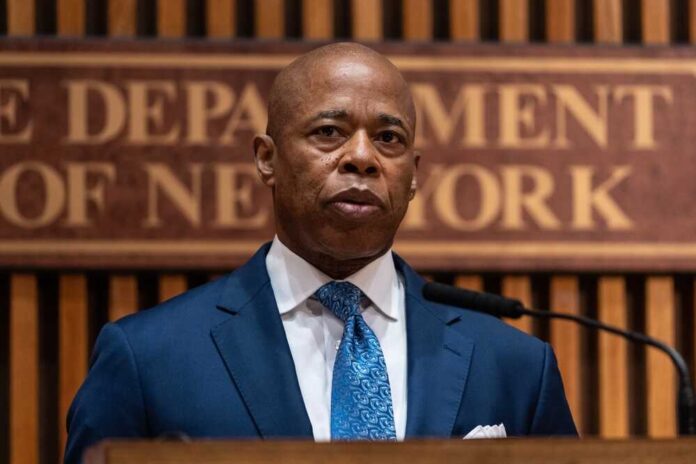
New York City is facing a challenge of unforeseen proportions in the aftermath of the end of Title 42. Mayor Eric Adams made an alarming claim on Wednesday: about 50% of all the city’s hotel rooms are now housing migrants seeking asylum. This startling revelation, if accurate, hints at a significant economic blow to the “hotel capital” of the world.
Adams’ statement paints a gloomy picture of a city flooded with migrants, leaving him and his administration grappling to find accommodations. “New York City is the hotel capital,” he insisted, arguing that this crucial sector, with its heavy influence on tourism, is in dire jeopardy.
Adams can GF himself.
Last night he shipped bus loads to Long Island & into a recreational center built for children.
This is going to happen everywhere across the country.Be sure your situational awareness is peak at all times, NO MATTER WHERE YOU LIVEhttps://t.co/0TfrAZ8pJ4
— USA (@WeThePeopleUS_4) May 18, 2023
Yet, this assertion was immediately challenged, particularly by City Councilwoman Diana Ayala, who boldly dismissed Adams’ claim. “It would be impossible,” she stated, referencing the current estimated migrant count, around 65,000, relative to the city’s roughly 130,000 hotel rooms. This contention points to the strained credibility of Adams’ claim.
Despite the controversy surrounding the claim’s validity, the mayor’s insistence underscores a deeper issue. Beyond the arithmetic dispute, a more significant concern is the potential economic impact of this situation. As Adams put it, funds traditionally sourced from visitors frequenting Broadway plays, shopping, and dining are being redirected.
Migrants, instead of tourists, are occupying these hotels. This could cause a massive shift in revenue sources for a city heavily relying on its vibrant tourism industry. Adams’ concerns aren’t unfounded; he understands the financial impact and has called upon the federal government to aid in mitigating the border crisis.
While Adams struggles with the influx of migrants, the hotel industry representatives seem hesitant to confirm or deny his claims. Vijay Dandapani, president of the Hotel Association of New York City, sidestepped the issue, focusing instead on their mission to serve New York’s visitors.
Mayor Adams’ administration has already seen its fair share of criticism over its handling of the migrant situation. From directing migrants to hotels in upstate counties to reports of considering Rikers Island as a possible housing solution, Adams’ strategies have stirred up controversy.
This current predicament poses more questions than answers. One such question is whether the mayor’s alarming claim of a 50% hotel occupancy by migrants is an overstatement to raise federal attention or a shocking truth.
Nonetheless, the takeaway isn’t the exact percentage of migrants occupying NYC’s hotels but the consequences of this burgeoning crisis. New York City’s economy is taking a hit, and the mayor’s plea for federal help isn’t simply a political move but a desperate call to prevent a significant economic downturn.
All in all, the Big Apple, despite its reputation for resilience and adaptability, is dealing with a crisis that threatens one of its core economic sectors. How Adams handles this issue will define his legacy as his city waits to see if the federal government will lend a much-needed helping hand.



























